
Arquivo para a ‘Calm Technology’ Categoria
What is missing on the 4th. Industrial Revolution
I read the book of the creator of the World Forum of Economics,  Klaus Schwab, it is amazing the scenario that describes, going through the digital world calls the digital cash accounting system, the blockchain, “book-reason distributed” (mistranslated in portuguese that is book-box) by stating that “it creates trust by allowing people who do not know (and thus have no underlying basis of trust) to collaborate without having to go through a neutral central authority – that is, a central accounting or depository. “(Schwab, 2016, 27), going from the physical category to the biological world, but perhaps something is lacking: a” soul “for all this.
Klaus Schwab, it is amazing the scenario that describes, going through the digital world calls the digital cash accounting system, the blockchain, “book-reason distributed” (mistranslated in portuguese that is book-box) by stating that “it creates trust by allowing people who do not know (and thus have no underlying basis of trust) to collaborate without having to go through a neutral central authority – that is, a central accounting or depository. “(Schwab, 2016, 27), going from the physical category to the biological world, but perhaps something is lacking: a” soul “for all this.
Skeptics and fundamentalists will continue to cry: unfair! Power of technoscience! An authentic dehumanization! Yes it may be, but simply protesting or twisting the nose will not make the rapid and dizzying advance of technology receding, not even the ecological appeal, more technology is often more ecology, see the LEDs, solar energy and control now possible by Sensing devices in plants, forests and even microorganisms.
Perhaps a problem that deserves serious questioning is inequality, but Schwab did not shy away from it by explaining the emergence of “innovation-oriented ecosystems, offering new ideas, business models, products and services on pages 94-95. Those people who can only offer less skilled jobs or common capital “(Schwab, 2016, p.94), and concludes” the present world is very unequal “(p.95).
The phenomenon of inequality is undoubtedly the most worrying, even in countries that can be thought less unequal, the Gini index for example in China, the author points out, rose from 30 in the 1980s to 45 in 2010.
It further points out that levels of inequality: “increase segregation and reduce the educational outcomes of children and young adults.” (Ibid., 95), this has changed, for example, the so-called “middle class” pattern in the USA and United Kingdom has the price of “a luxury good,” says the author.
Contrary to what one might think, the Global Risks Report of the 2016 World Forum speaks of “de-empowerment” of the citizen, although there are campaigns like “get-out-the-vote”, since in Many countries voting is not mandatory, but the content we consume online are miserable, lack truth and fact, and they influence it.
The author does not lack the concepts of identity, morality and ethics, expressed in the chapter on page 100, talks about OpenAI, an initiative chaired by Sam Altman, president of Y Cominator and Elon Musk and CEO of the revolutionary Tesla Motors, who believes that the best way To develop the AI is to make it free for all and to make it be invested to improve human beings, but its program is abstract and unrealistic, although it presents it in the H frame the ethical limit.
It is necessary to discover in the fissures of the technological advance aspects of development of human sensibility, of appreciation for the Other, where collaborative and coworking environments favor this, but what you hear is still a fundamentalist shout against technology.
Buber’s I-tu dimension
Martin Buber’s ideas contribute to the integration of a philosophical conception  of the human being with an attitude towards it.
of the human being with an attitude towards it.
In his work, Buber deals with the man in the world, of his multiple possibilities of existence, depending on how he stands.
The principle words I-you and I-these signify ways of being of man, ways of responding to reality, which always calls for a positioning.
The self that opens to a you is not like the self that relates to a thing, that is, the established form of relationship grounds the way of being. Therefore, the relationship produces different possibilities of the person being in the world.
I-you and I-that are part of the human movement, being inseparable, constantly alternating with each relationship (Buber, 1923/2001). In the I-you attitude, the person enters into a relationship, lets himself be impacted, let himself be crossed by the living presence of the other, be it a person, a situation, a work, or any entity. At that moment there is an intensive dimension, not measurable or reducible to temporality, spatiality and objective questions. The world of you has no coherence in space and time: it is a field of forces, of presence, of vitality. It can not be apprehended or imprisoned in representations: it always escapes. It is not reduced to perception: it is intense, alive, pulsating. It always reappears differently, in continuous transformation. The I-this attitude, in turn, leads to experiential objectively situations.
The world of this or of objectivity commands the real, making it habitable and recognizable.
For Buber (1923/2001), the melancholy of human destiny is that the tu becomes, irremediably, this, which is necessary for the understanding of the lived process.
One can not always maintain the I-you attitude, since man is incapable of permanently dwelling in the encounter, existence is ruled by the alternation between I-you, I-it and its unfolding.
In the Buberian perspective, experience implies a reflexive detachment, situating itself within the scope of this, while the relation is within the scope of the you. The relationship is experience, not experience. By finding someone in the self-mode, the consequent loss of space, time, and the destabilization of the self enable contemplation, new sensations, and crossings.
The self-relation, on the contrary, places the person in the world of objects, ordering and being extremely necessary for the elaboration and production of meanings, so long as it does not become the predominant form of relation to the world
The animation in the east
Even though internet video and online movie sales are increasing, such as Netflix,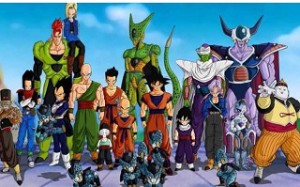 movies are still very strong even in countries where technology is cutting edge, such as Japanese cinema, with the box office of “Your Name” (Kimi no na wa), which reached 180 million viewers in 2016.
movies are still very strong even in countries where technology is cutting edge, such as Japanese cinema, with the box office of “Your Name” (Kimi no na wa), which reached 180 million viewers in 2016.
Besides the drawings of Mangá, Digimon Adventure, Naruto, Pokémon, Sailor Moon, Cowboy Bebop, and other characters are also not far from the famous (among the young) , Dragon Ball Z, Dragon Ball GT, The Knights of the Zodiac, Sakura, Hamtaro, Digimon, Beyblade and Inuyasha.
The drawings are very colorful, rich in detail, with elegant but original clothes, and although the stories are unreal (not to be confused with virtual ones), heroes take care of cities and value the imagination with special powers that attract children and adolescents in a World without utopias and fantasies, it is not possible to imagine the reason for such success.
The film, Kimi no na wa (His name), has grossed about $ 76 million in China since its December 2 debut,
Toho distributor Kimi No Na Wa said box office sales in China topped 9 billion yen, or about 76 million dollars, since its December 2 debut. 1 million dollars in conservative Thailand.
Directed by Makoto Shinkai, tells a love story of two young high school students, who exchange their bodies and start to live an adventure rich in fantasy and feelings, was launched in late 2016 in 91 countries, including France and Korea Of the South, but still no date for Brazil
An unexpected philosophy
We have already spoken of a post on the issue of non-transparency raised by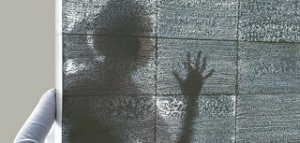 Habermas in an article, and we also briefly quoted the author of the Society of Transparency, Byung-Chul Ham, but now upon receiving the book and opening it I come across an unexpected philosophy, Profound though not finished as any postmodern, but Heideggerian and humanist discourse.
Habermas in an article, and we also briefly quoted the author of the Society of Transparency, Byung-Chul Ham, but now upon receiving the book and opening it I come across an unexpected philosophy, Profound though not finished as any postmodern, but Heideggerian and humanist discourse.
He sees the question of transparency from a new angle, typical of his Eastern culture, reveals the issue with a capital phrase: “I refer to transparency only to corruption and freedom of information are unaware of its size” (Han, 2017, p. 12).
He reveals it as violent on the following page: “The coercion of transparency levels man himself until he becomes a functional turning point in a system. Such is the violence of transparency. “(Page 13)
It reveals immediately why we are victims of this new anathema of modernity: “spontaneity, what is the record of a happening and freedom, traces that constitute life in general, do not carry anything transparent” (idem), and quoting von Humboldt Explains: “… and it would be to attempt against the historical truth of its origin and its transformations to want to banish from it the possibility of these inexplicable phenomena” (Humbold apud Han, page 13).
It does not fail to point out ways, which we have already drawn here for various occasions of otherness, but presents it in a new dress, opposing the society of transparency that does not “allow information or vision gaps”, explains that in the German language “gap” ( Lücke) and “luck” (Glück), citing R. Sennet in his “Respect in a World of Inequality”.
He makes a new phrase suddenly strong: “Love without a gap in vision is pornography,” theme that will return and theme from another book of his “The agony of eros”, another sure theme of this time.
But it does not give this a shallow explanation, affirms that this “positive society” affirming that this society is neither hermeneutic nor dialectical, but “a society that does not admit any negative feeling” (page 16), does not do this But it is my reflection that this is the Platonic function of contemporary idealism.
He affirms that this positive society is not the cause, “but the consequence of an end of the theory (the author’s emphasis), in the authentic sense, which is closer. The theory cannot simply be replaced by positive science “(page 17), in clear reference to the appeals of practicality of contemporary pragmatics.
It then appears in this plan, while pointing out the path that politics draws in this ideal-positive perspective, “Politics is strategic action (again the author’s emphasis). And for this reason, there is a secret sphere of its own. Full transparency paralyzes it “(page 18).
I stop here the analysis, because it is not possible in this space to point out the new paths that the author trails, but only at the beginning of the first chapter can we see the breadth of his analysis.
The beautiful, the contemplation and the meditation
In times of anxiety and consumption, the digital world is not responsible for this, but the emptying of being does not have time for listening, contemplation and meditation.
but the emptying of being does not have time for listening, contemplation and meditation.
They are not exclusive fields of what is religious and not even in this field is always the contemplation of the beautiful and the meditation on the deeper meaning of the relationship between beings, between beings and things, what matters is not quality, but quantity.
As in everyday life we are accustomed to mere consumption and satisfaction, we never come to inquiry and contemplation, since these are not dedicated to mere consumption and not even to what is useful, as we have said in previous posts, it is necessary to silence the soul for See and listen to what is in a work of art, a poetry or a meditation.
It is not only a question of simplifying, but of deepening and allowing oneself to be invaded by the new, the beautiful and the inquiring, who we are? where are we going ? What do we do and why do we do it?
To quiet anxiety, to find moments of inner and outer silence, to allow oneself to invade the beautiful, and finally to produce an environment conducive to beauty, art and poetry.
Everything seems contrary to this, but Heidegger warned there is a use that is not always considered in language, which is the use of poetic language, one could say inclusion in language not in the style of poetry, but itself as a Form of articulation of language.
To consider meditation as a form of preoccupation deeper than the mere consumption of questions, relationships and even objects (the object of art is considered here) and make us capable of arriving at the new, the new mediations and even the new relations Ontological.
If beauty can be saving for the world, it is necessary to meditate on what is beautiful, in order to arrive at a historical awareness of what it represents as a transforming agent.
Digital art, meditation and future
One of the most radical exhibitions of digital art by Nicolas Maigret and  Brenda Howell, titled “The Pirate Cinema“, uses P2P bit-stream system exchanges and screens where the user is required to download and the sources of the movies, with the IP (Internet address) shown in the right corners of three screens, the environment being chosen for the art project “Torrent Freak”, and can be viewed online through the link of the exhibition.
Brenda Howell, titled “The Pirate Cinema“, uses P2P bit-stream system exchanges and screens where the user is required to download and the sources of the movies, with the IP (Internet address) shown in the right corners of three screens, the environment being chosen for the art project “Torrent Freak”, and can be viewed online through the link of the exhibition.
The shallower concept of digital art is the one that can be found also in Wikipedia, which says that is the one produced in environmental computational graph, also there is quoted the definition of Wolf Lieser, according to which: “They belong to the digital art the artistic works Which, on the one hand, have a specifically media visual language and, on the other hand, reveal the metacharacteristics of the medium “, which is larger than the previous one.
But they both reject a much more complex concept that preceded it: what is art? Was there a metaphysical, symbolic or linguistic purpose in art? Or something else yet?
We have already clarified the false dichotomy between objectivity and subjectivity of art, also the dichotomy of utility and uselessness, since it depends only on the perspective of reading, see the source of Duchamp, and still have more the question of metacharacteristics, said above, but in the Truth is not the characteristics that are outdated, but the very medium that is a metame, ie, can happen in an indirect way all previous arts.
Examples of these meta-medias are digital photographs immediately revealed and easily worked by software, editions of videos and textual production in any style.
The question of the technical reproducibility of the work of art must be understood to be prior to the digital age, the work of Walter Benjamin, who died in the midst of World War II, already defined the new profile of pre-digital art: “The extraordinary growth Which our media have experienced in their adaptive and precise skills, impose significant changes in the near future to the ancient industry of the beautiful, “quoting Paul Valery in his work Pièces sur l’art (pp. 103-104), so it is not this Which differs from digital art.
Perhaps a still little understood connotation of these meta-midias is their ubiquity, that is, the multi-presence, and this may accelerate the process of contemplation of art, of course some question whether this is art, but time will say that it is and still more the public Growing, as shown by the popularization of, for example, photographic art, in the billions of Instagram users, with undoubtedly artistic photos, not all of them of course, but in the thousands.
If the contemplation of the beautiful leads to meditation then it may be a time of meditation, although some may say that it is liquid, perhaps because it is not useful, it will use good videos to relax can be useful.
Neither objectivity nor subjectivity just beauty
The fact that the contemporary world finds no space for silence, for listening and 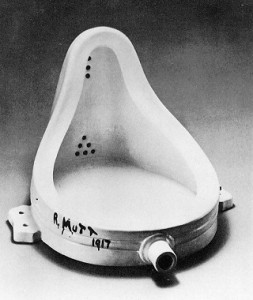 especially for contemplation, the mere fact of admitting that there is the beautiful even without any belief, is the fact that we cling to the tensions between subject and object, now Projected on the object, sometimes projected on the subject, but without the “world of objects” is an abstract.
especially for contemplation, the mere fact of admitting that there is the beautiful even without any belief, is the fact that we cling to the tensions between subject and object, now Projected on the object, sometimes projected on the subject, but without the “world of objects” is an abstract.
Among the three most beautiful phrases about art encounter: “Art says the unspeakable; Expresses the inexpressible, translates the untranslatable “of Leonardo da Vinci, but on the beautiful expression of art I find the phrases between the ones I most appreciate and perhaps the most quoted, of Victor Hugo:” the beautiful is so useful with the useful, Sometimes even more “and Dostoevsky:” beauty will save the world ”
The fact is that art is always expressing what everyone sees according to necessity and utility: the new, the beautiful and the unprecedented, following the line of da Vinci, and following the line of Victor Hugo the useful of the seemingly useless, Marcel Duchamp, by placing a urinal on his head and calling it “The Fountain” (1917), revealed the double face of utility, or perhaps the uselessness of what we call useful, then it can be said that art is paradoxical.
The modern utilitarian philosophy will say that the beautiful is the concept related to certain characteristics visible in the objects (or beings), nothing differs from the concept of property and the aesthetics would be only and exclusively the character of the object.
Schopenhauer criticizes Kant in saying that he does not correctly establish the content of the a priori “common frontier” of subject and object, for in the first place he does not recognize the “first, principal and most universal” form of representation, namely, that of being Object for a subject (of the Objekt-für-ein-Subjekt-Sein) before talking about the beautiful.
According to him when we preach something beautiful (schön), we say, in objective terms, that in him we know “not the particular thing, but the Idea”. However, since any particular thing is the objectification of an idea, at first it can be known in everything, as the philosopher concludes: “Everything is beautiful”, but for him everything is a part of the Will and not of Being.
The work The origin of the work of art, fruit of three lectures given by Heidegger in 1939, but the book was only published in 1950, with translations into the Portuguese of the 70s, will develop according to three aspects: the thing, the truth and The art-poetry.
For truth he takes up poetry or “alethéia,” a phenomenon from which being (of men and things) comes to the fore and gains meaning, already the expensive concept thing to his master Edmund Husserl, to return to itself and do it with Poetry, not as a literary genre, but Poetry is rather the movement from which things arise, it is the movement of production from where it happens to the unveiling of the being making it gain body and meaning, art is then unveiling, happening Or a new “appear” of the thing happens.
Exemplifying: A stone before being an art, it will be the thing-stone transformed into thing-art through the “artifice” of the artist and is the soul of this one who, only going beyond the limits of his body, gives life to the stone and transforms it into art, In this stone is then ontological.
Rodin’s phrase: “I choose a block and I take everything I do not need from it”, or from Michelangelo to the statue of Moses: “Why not talk?”.
Identity, dialogue and transparency
Three elements that seem distinct are in deep connection in a globalized time,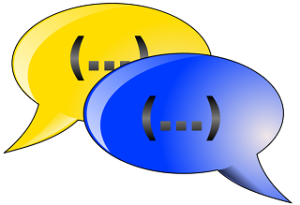 which is reflected in the incomprehension of the emergence of a certain form of nationalism, see the US and French elections, Brexit in England, but on the positive side of the dialogue is exactly the Understanding of which cultures have roots in originating societies
which is reflected in the incomprehension of the emergence of a certain form of nationalism, see the US and French elections, Brexit in England, but on the positive side of the dialogue is exactly the Understanding of which cultures have roots in originating societies
The confusion that we can see in Brexit now that the first deals begin to be negotiated is that from the economic point of view is a complicating element while in the aspect of immigration and relationship between nations is a very high tension.
Identity means to be aware of identity, and we have already done in several posts the analysis that is necessary for this awareness the dialogue with the different, since dialogue with equals is monologue, it can be said that the deeper the dialogue with the Other, The more you are aware of your own identity.
Transparency is the complicating element, so we said above that there is “a certain kind of nationalism” that sees only the pairs and never the different ones, it is a kind of closure that does not lead to greater identity because it is not transparent and authentic with itself and with the Other.
It is necessary to distort facts, to work with the relativism of truth and mainly to resort to prejudice, and all this leads to an absence of transparency both in the individual and in the social field, what is wanted is to shape society to a national mirror, inconceivable In an era already globalized, with people walking all over the globe.
What we see with the lack of transparency is an inevitable polarization in prejudices and ideologies, which is conceivable at an early stage of dialogue, but impossible to build relationships in a time that demands increasingly broad and open relations. It is possible to make the discourse that the conflict is necessary, but where it should move, to the closing in groups and bubbles, because the fragility of this discourse is evident, of course it is possible that in a point of the dialogue the tempers become heated, without the Fusion of horizons and a walk forward an epoché (put in brackets), open the ears to the listening of the Other
Between public and private: transparency
The term seems a slogan of political propaganda, and in fact it may be, the idea that everything can be revealed and the control of apparatus, especially presidential, about what can and should be disclosed can contrary to what many announce, be strengthening services The disappearance of privacy, the collapse of trust, and crucial aspects of maintaining democracy and economic control.
can be revealed and the control of apparatus, especially presidential, about what can and should be disclosed can contrary to what many announce, be strengthening services The disappearance of privacy, the collapse of trust, and crucial aspects of maintaining democracy and economic control.
Byung-Chul Han’s book is a denunciation that the ideal of transparency can be as false as the worst utopias and modern mythologies: mistrust of everyone and lack of privacy by a “homogenization” of the interpretation of the facts.
Anyone with suitable instruments can get information on almost any subject, provided they have instruments and often economic strength to do so, and this already reveals one of the possible manipulations.
Powerful groups, dangerous groups and mainly malicious politicians can use the information available to make inappropriate use of the information available.
After publishing The Society of Toughness and The Agony of Eros by the German-Korean philosopher Byung-Chul Han, he enters another crop.
Transparency Society is a translation of Miguel Serras Pereira direct from the German text Transparenzgesellschaft, originally from Byung-Chul Han. In Portugal, the book was published in September 2014, in the collection Antropos, by the newspaper Relógio D’Água.
Byung-Chul Han denounces in this book: “The Transparency Society” (Lisbon, Editora Espelho d’Agua, 2014) is that total transparency is a false ideal, and according to the strongest and most dangerous author of contemporary mythologies, reveals his naivety and Strangeness “when he arrived in Germany: Philosophy knew nothing. I knew who Husserl and Heidegger were when I arrived in Heidelberg “(HAN, 2015).
He criticizes what he calls “transparency is devoid of transcendence” (ibid., P. 59): “Positive society avoids any kind of play of negativity, since it holds communication. Its value is measured exclusively in terms of quantity and speed of information exchange. The mass of communication also increases its economic value. Negative verdicts cloud communication (HAN, 2015).
What remedy, there is information that should remain private, but which? Who will control them? These are the questions that must be answered.
Han, B.C. The Transparency Society. CA: Stanford Briefs (first , 2015.
Lost or new homo sapiens?
In a paper published in Nature on June 7, a new skeleton of a humanid, the fact of being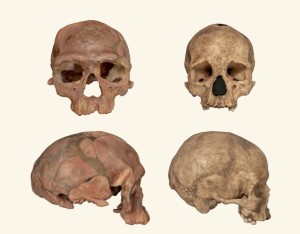 a homo sapiens is controversial, suggests that a race of humanoids lived in North Africa, where it is Morocco, for more than 315 thousand years ago.
a homo sapiens is controversial, suggests that a race of humanoids lived in North Africa, where it is Morocco, for more than 315 thousand years ago.
This changes the earlier conception dating from about claimed the emergence about 100 thousand years ago, measurements were made by laser equipment at various institutes in Europe, including Germany, where the study at the Max Planck Institute originated.
Jean-Jacques Hublin, author of the Nature paper and managing director of the Institute for Evolutionary Anthropology in Leipzig, explained: “Until now, the common knowledge was that our species probably arose, rather quickly, somewhere in the ‘Garden of Eden’. Probably in sub-Saharan Africa, “but now he added:” I would say that the Garden of Eden in Africa is probably Africa – and it is a large, large garden, “indicating a more extensive area for the emergence of man.
Hublin visited the Jebel Irhoud archaeological site for the first time in the 1990s, but had no time or money to dig up until 2004, having joined the Max Planck Society Society, rented a tractor to remove about 200 cubic meters of rock Which blocked access to the deeper part of the site.
Initially, one led by archaeological scientist Daniel Richter and archaeologist Shannon McPherron, also at the Max Planck Institute for Evolutionary Anthropology, dated the site and all human remains found between 280,000 and 350,000 years using two different methods, but then other countries also made measurements Using methods with laser use and the approximate date is 315 thousand years.
Hublin says his team tried and failed to get DNA from the bones of Jebel Irhoud.
This genomic analysis could have clearly established if the remains live in the lineage that leads to modern humans, but everything indicates that it may be a link more than humanoids clearly identified with the human race, and may be the missing link between us and the early primates.

